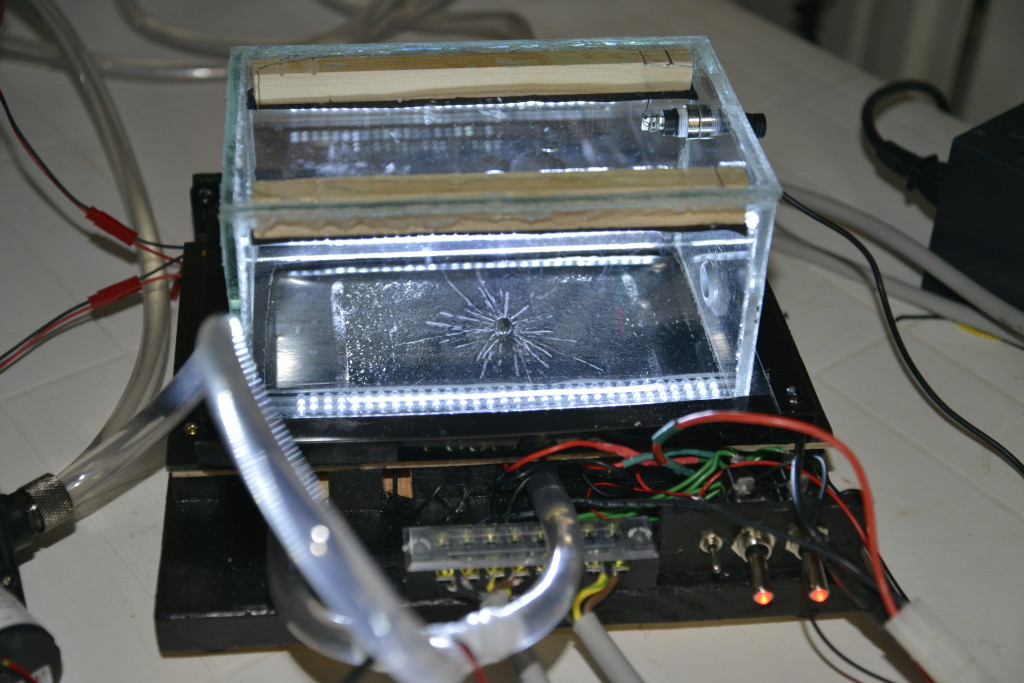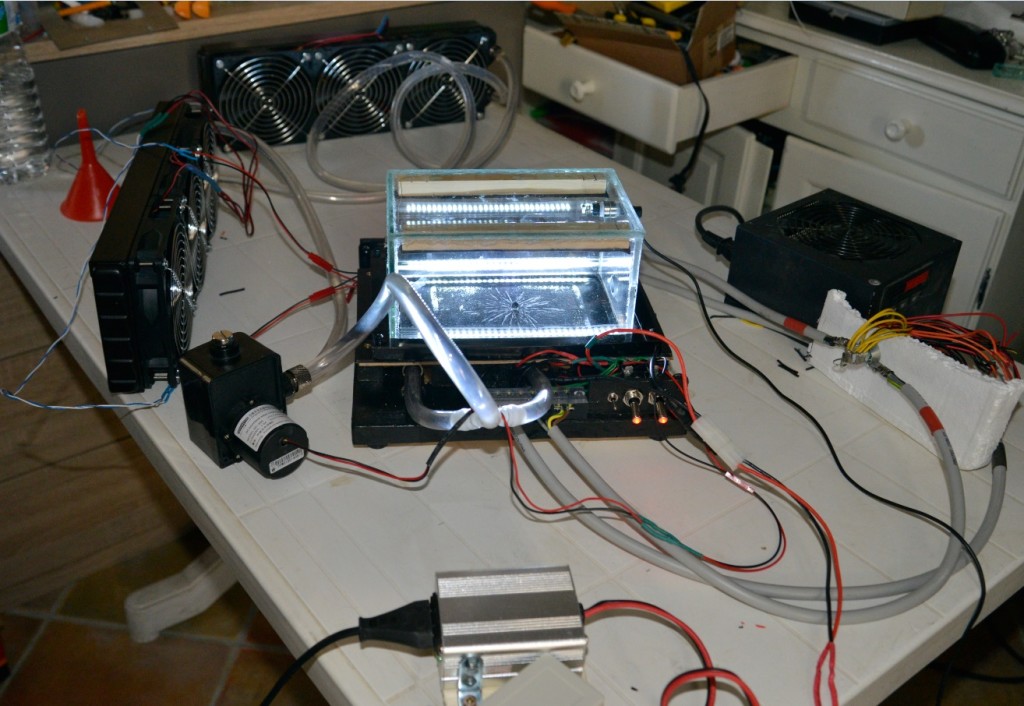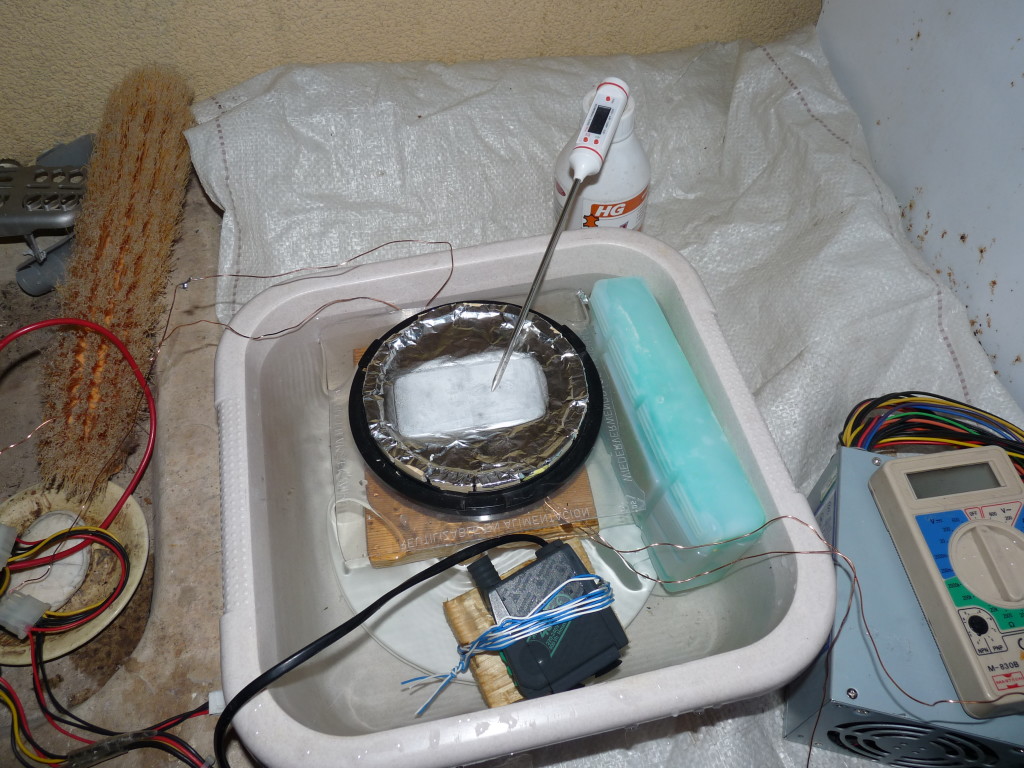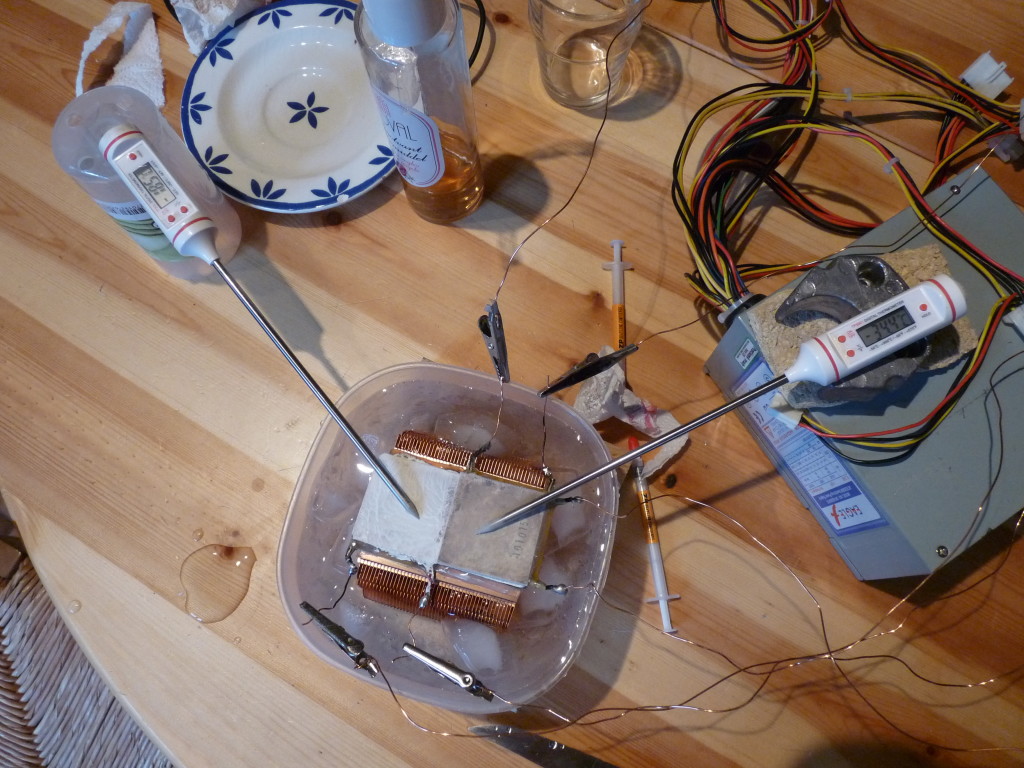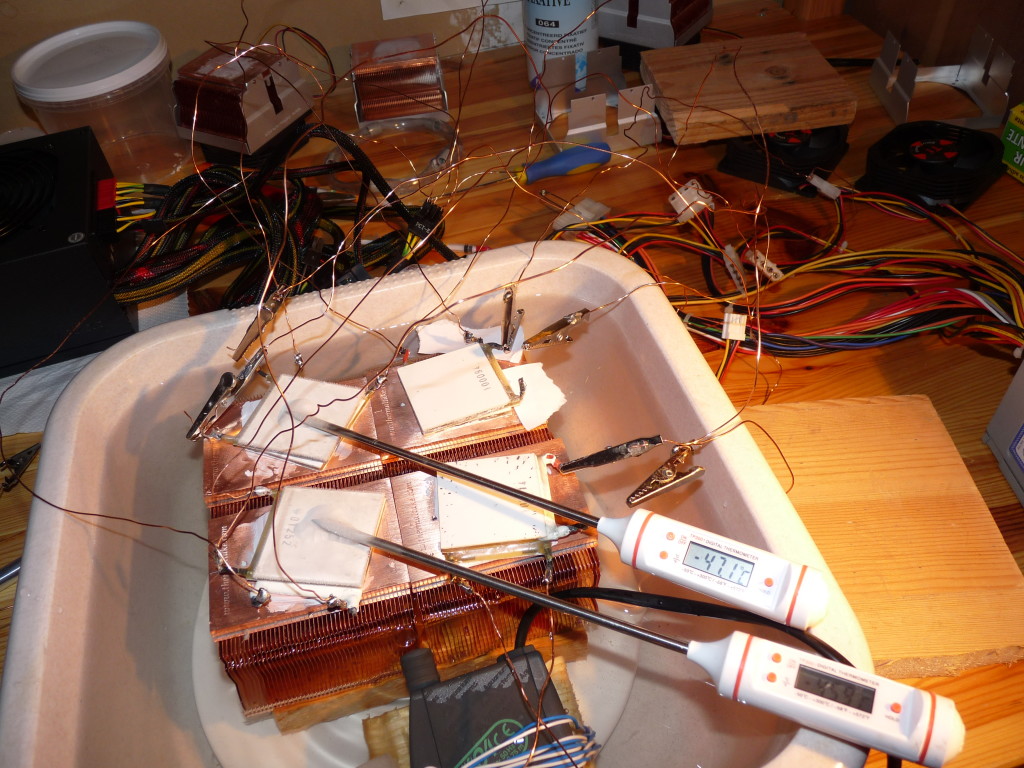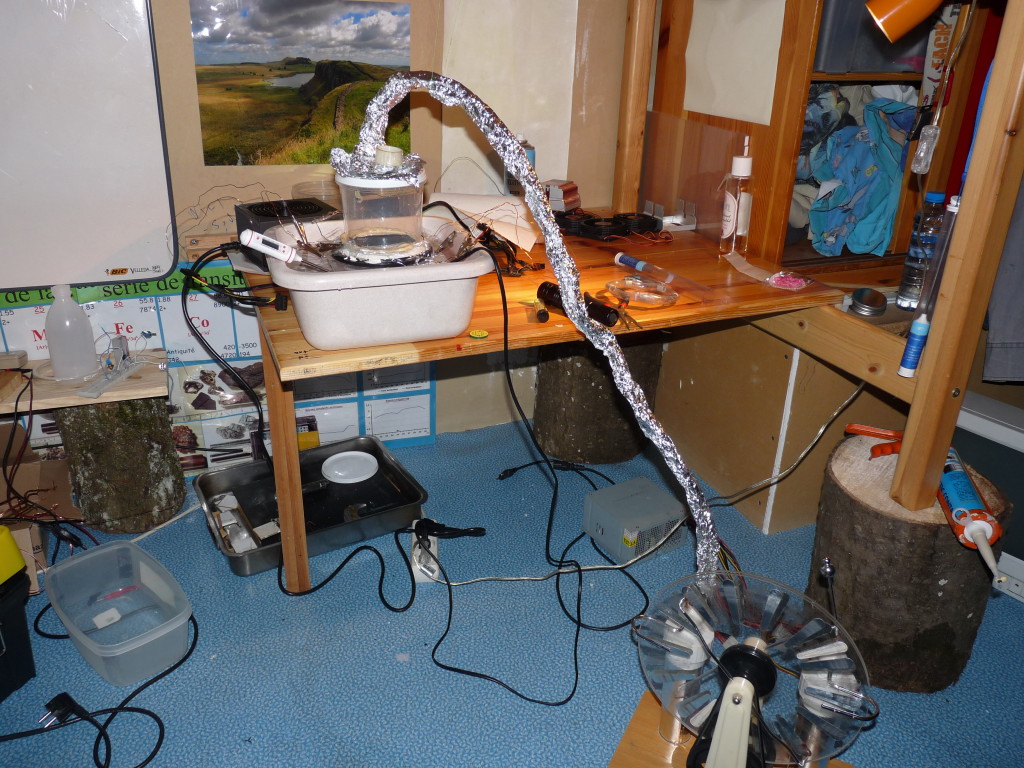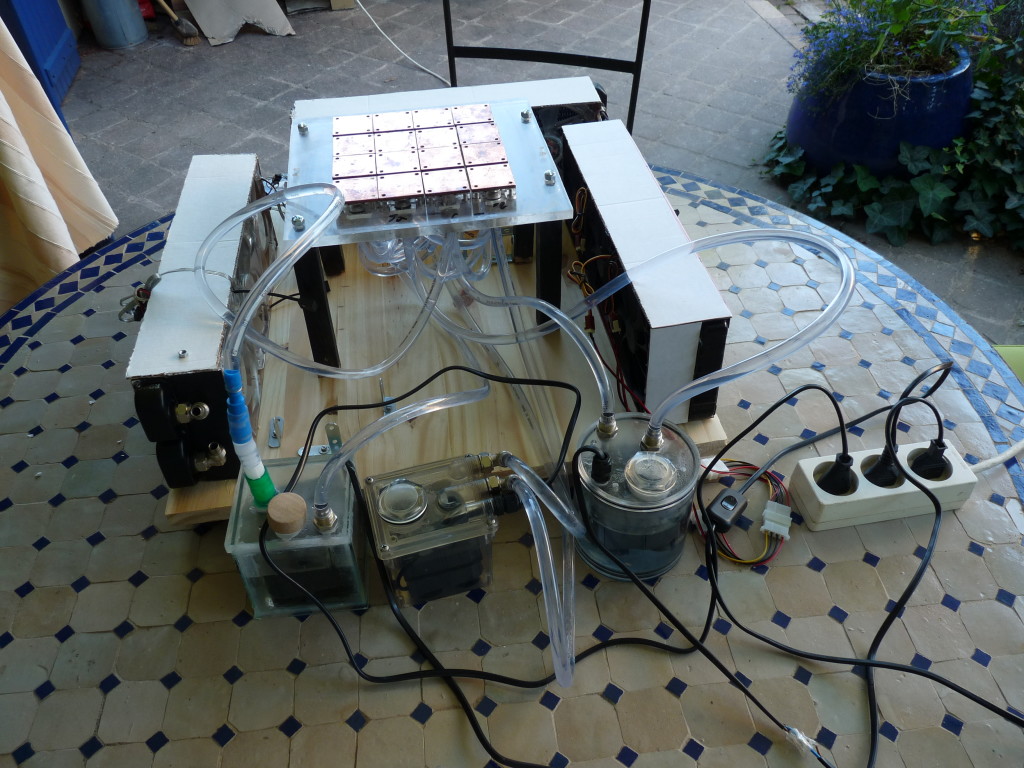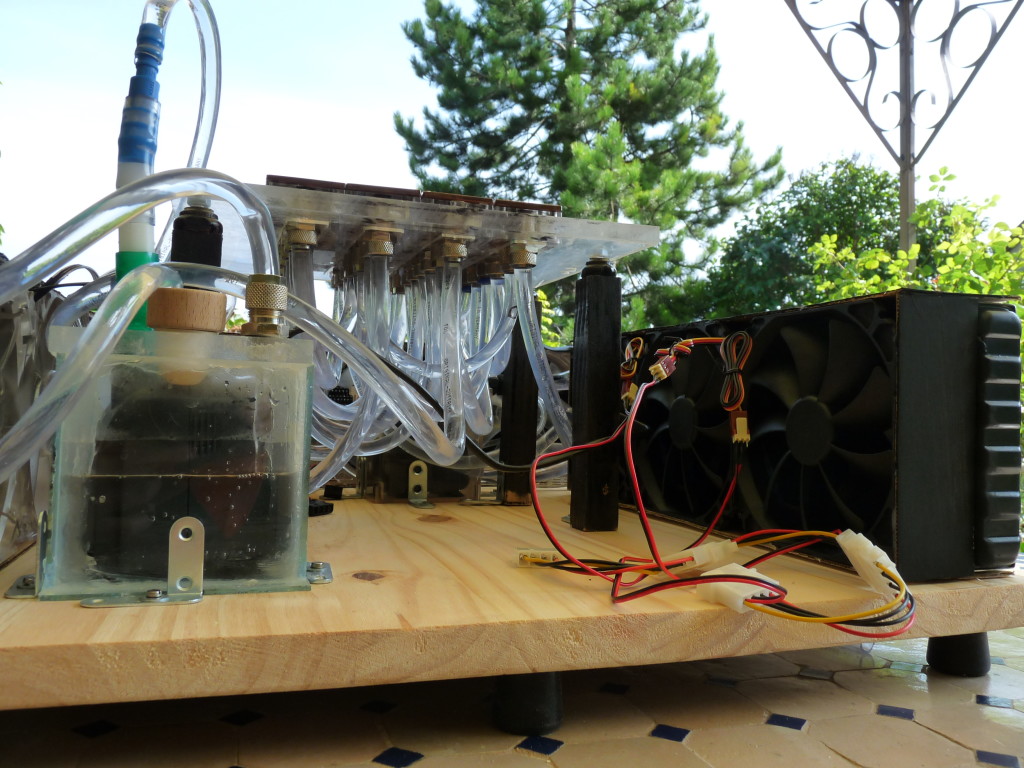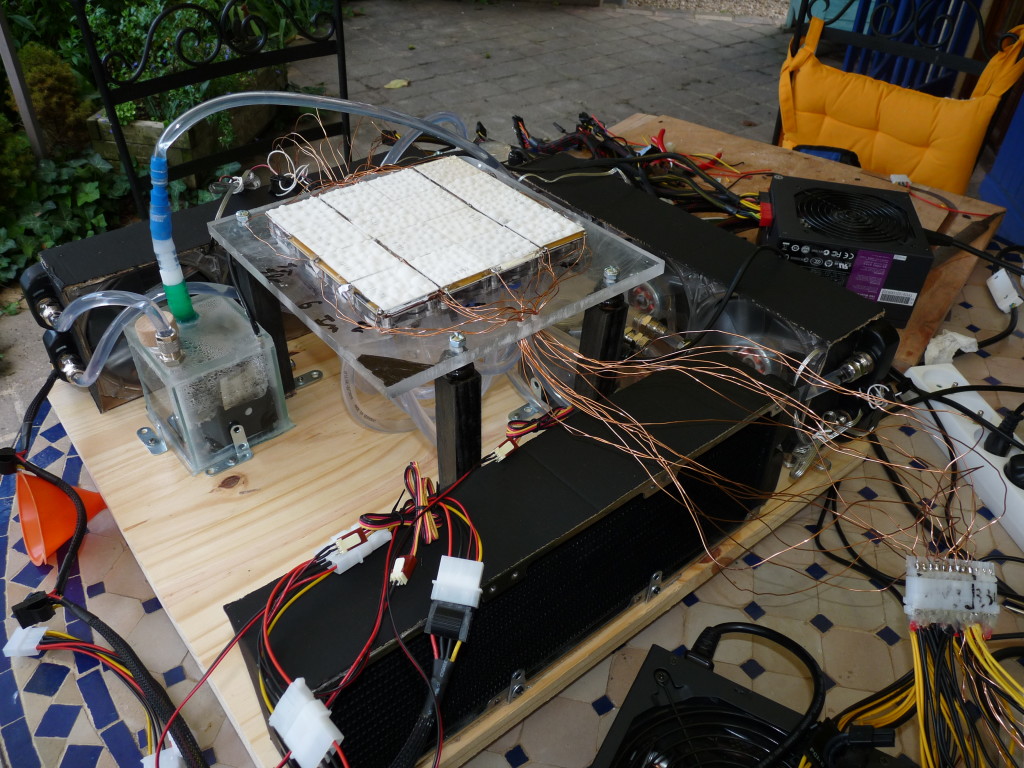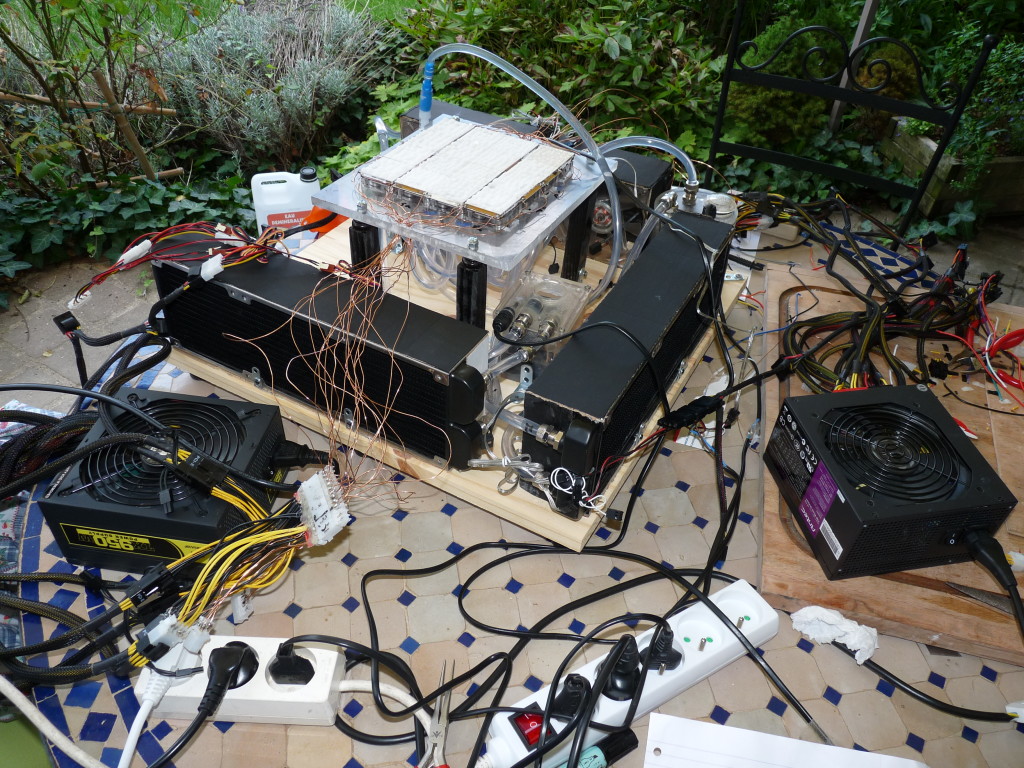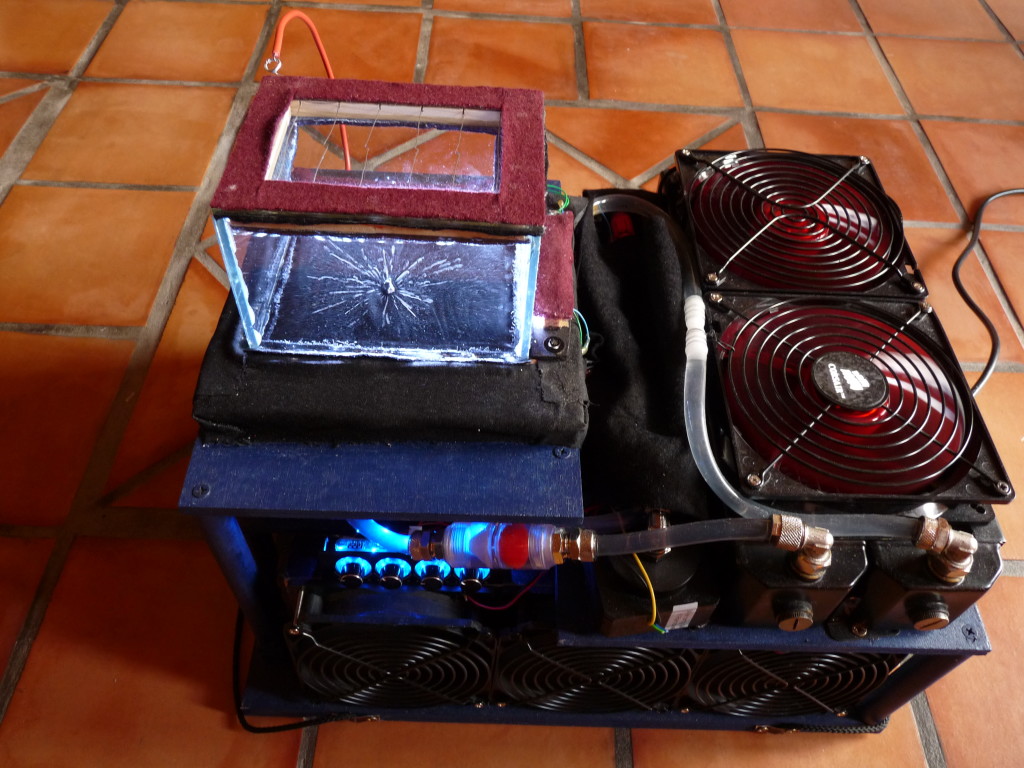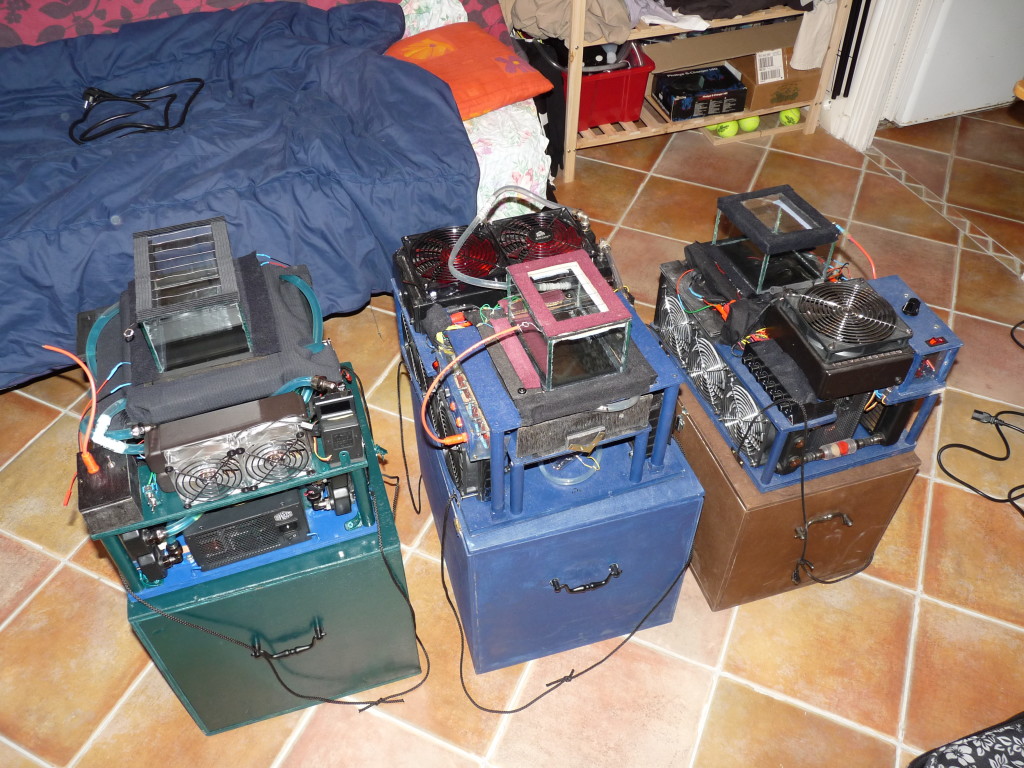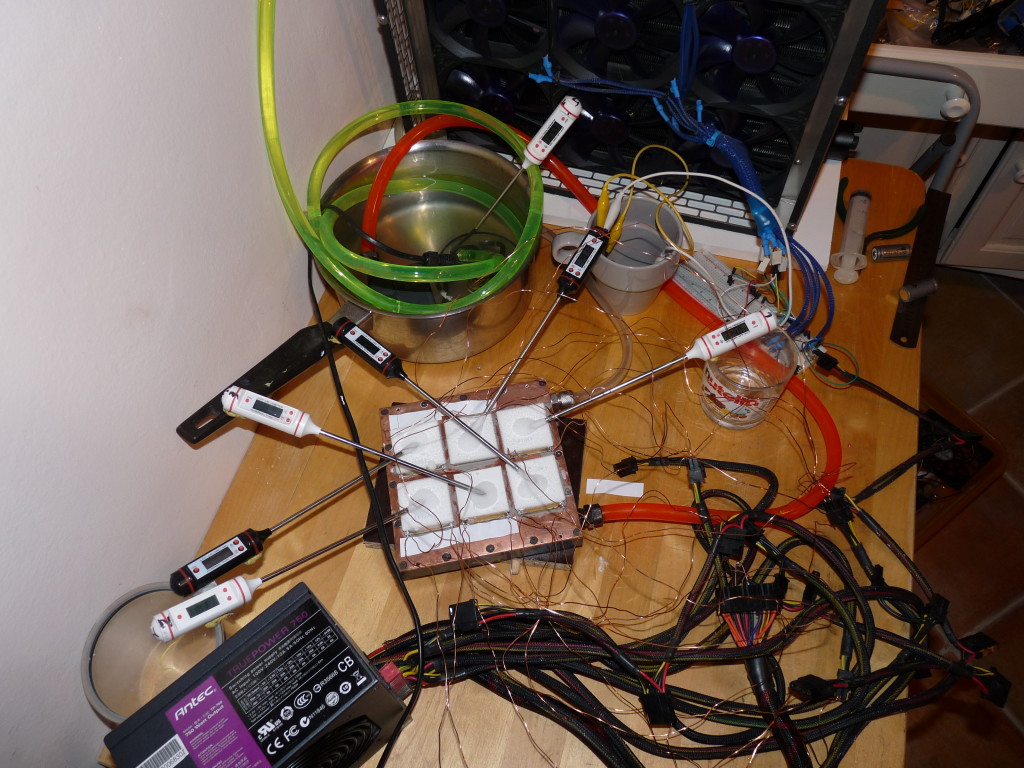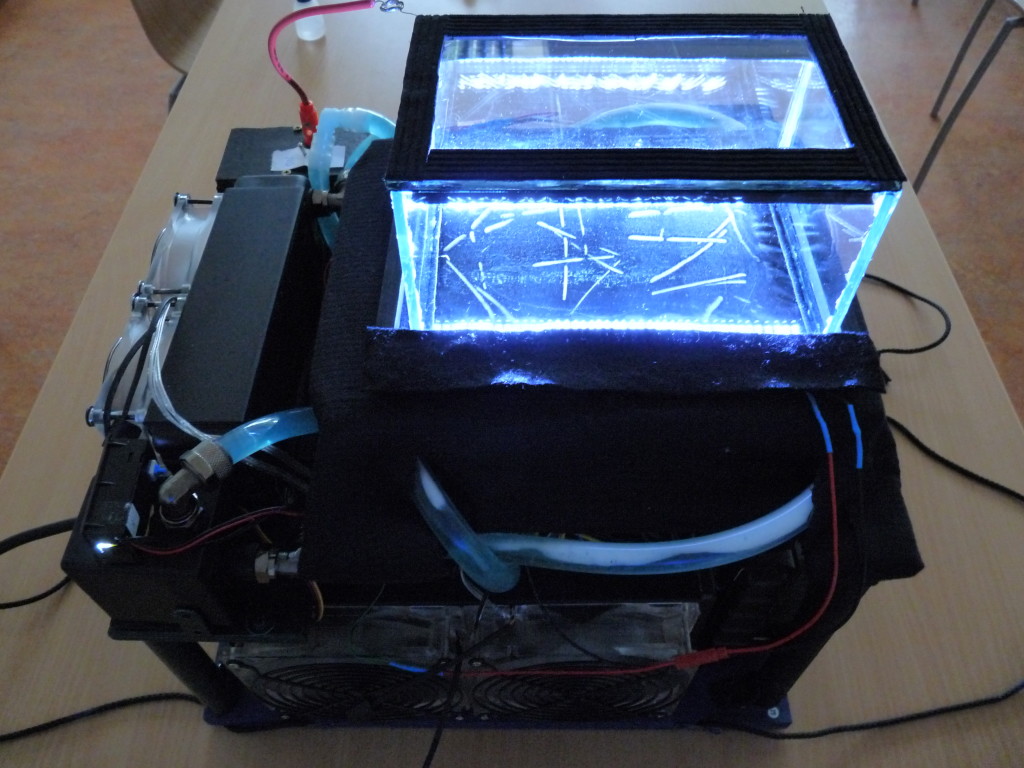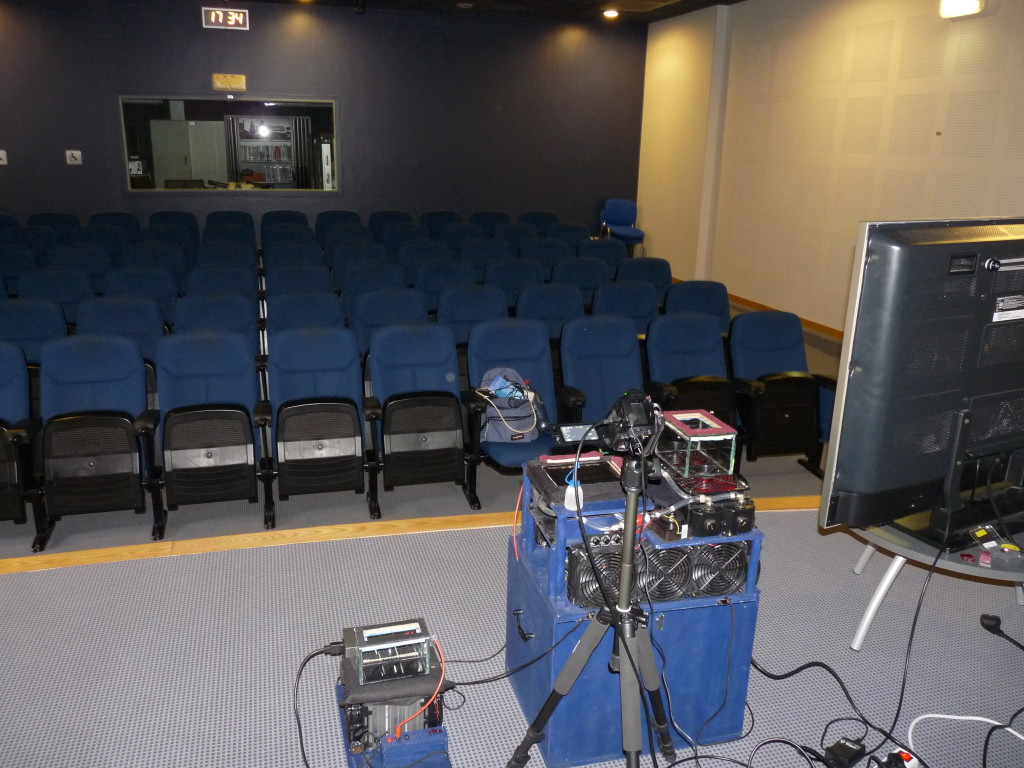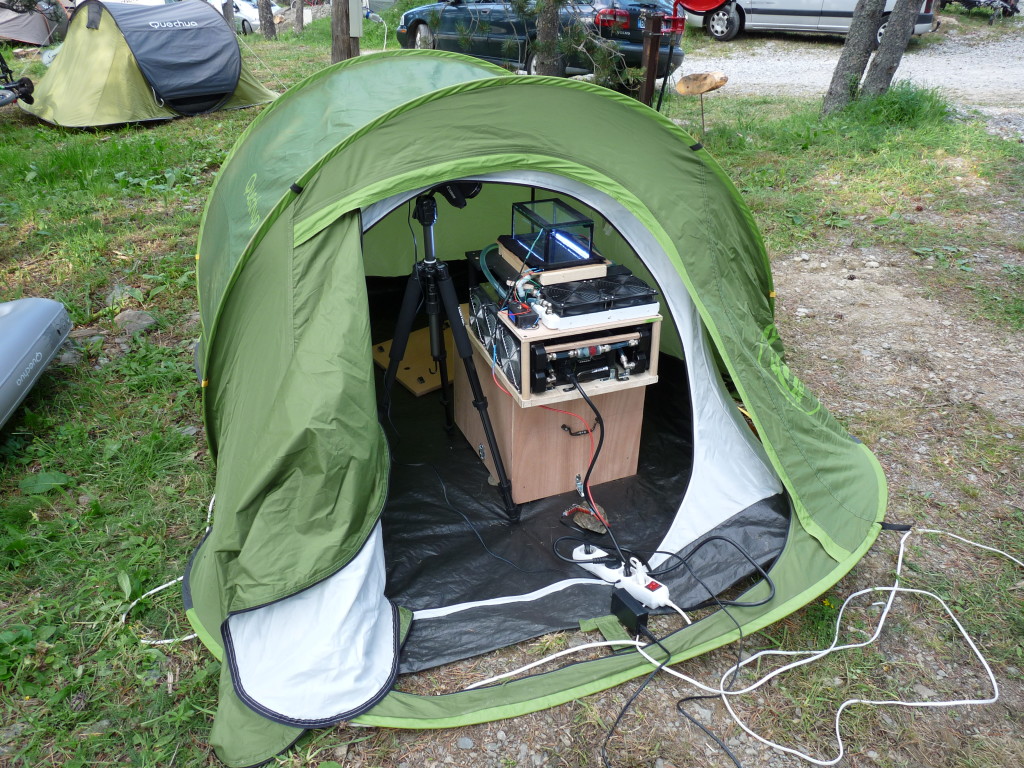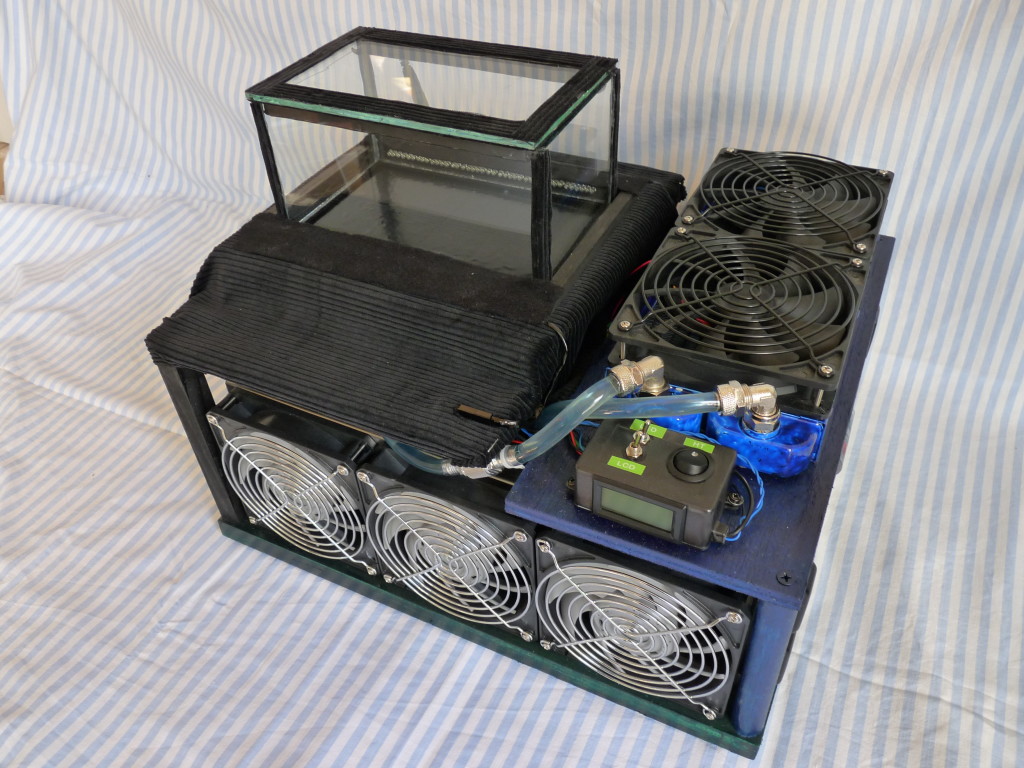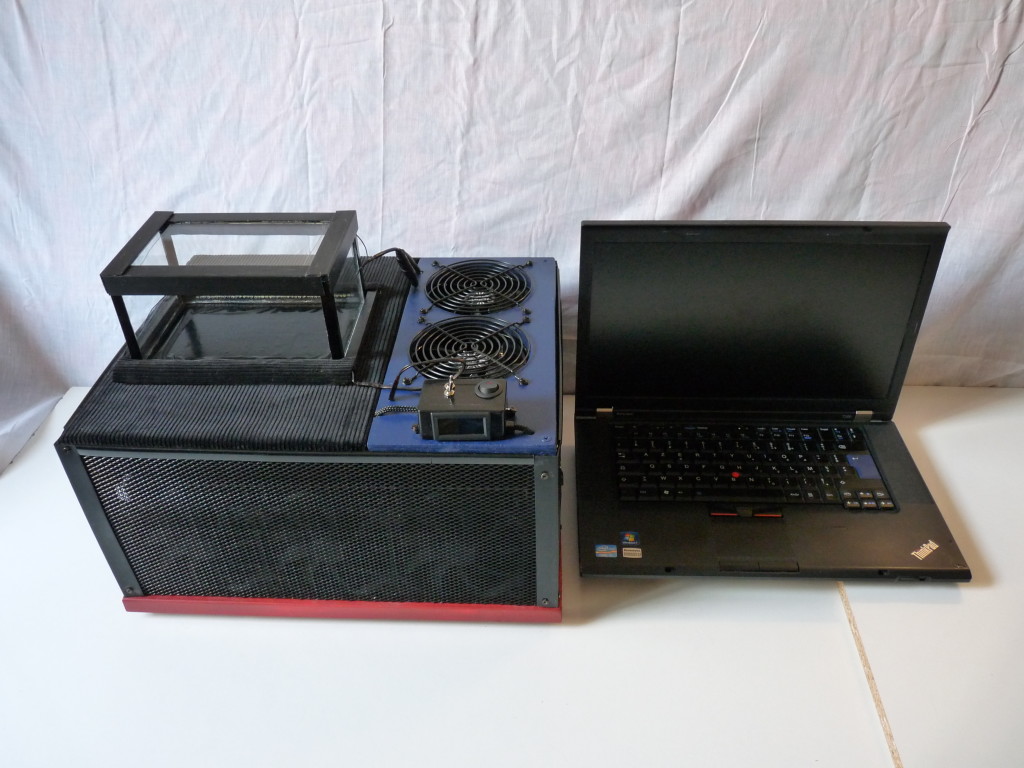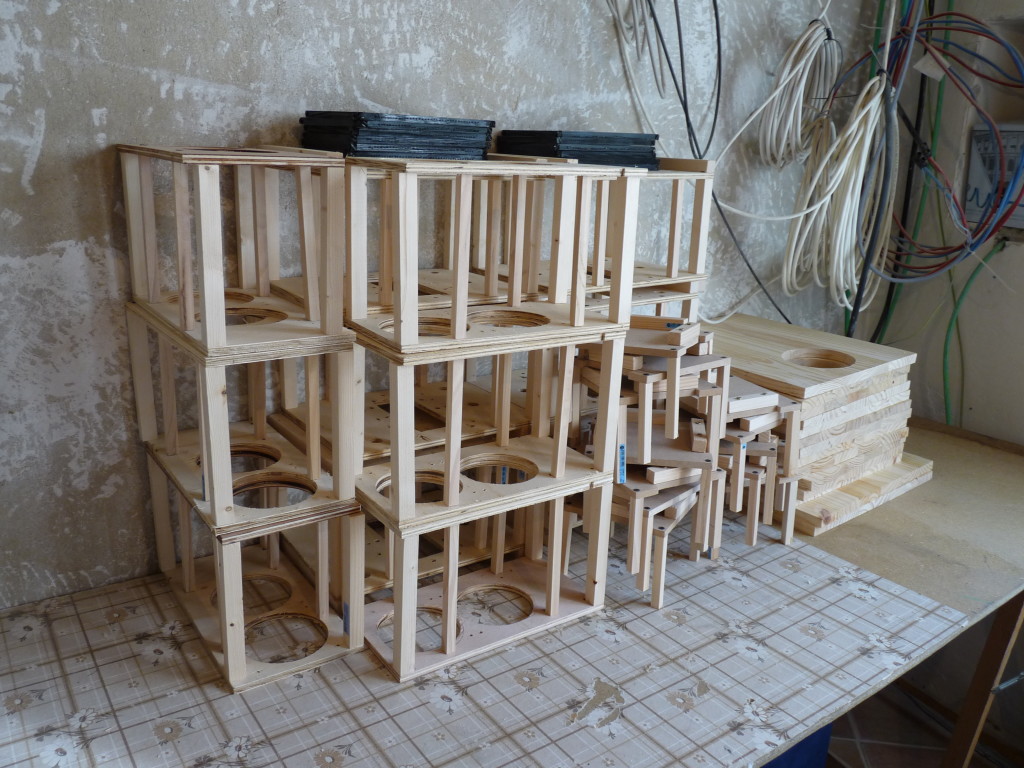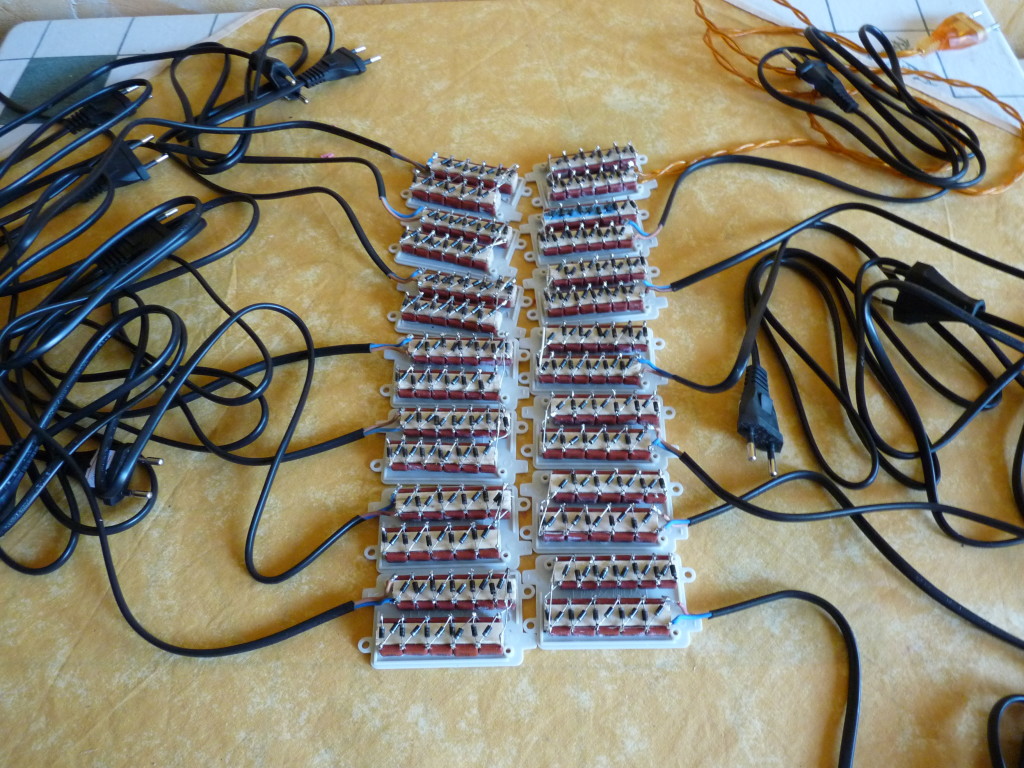With the large power of cooling of water, water cooled machine was my favorite design. I could make bigger surface of interaction without increasing too much the complexity of building.
First attempts
First experiences was to find how the water should be used to cool efficiently the peltiers. I used copper heatsink from CPU fans, put in a container with freezing water. I had very low temperature with this setup, but it’s impossible to have freezing water continuously. It was better to use a pump which put fresh water, cooled by radiators coupled with fans. The Wimhurst machine was used to provide an electric field, but the voltage was too high. 2000V is enough for cloud chambers.
First build
I used waterblocks for CPUs. At first I tried with 4 spaced peltiers but it didn’t not work. Peltiers have a very ow efficiency so they can only cool their own surface. I wanted to put a thin sheet of metal on the 4 spaced peltiers, so I could have a large surface area, but the overall temperature was not low enough to have a high density of droplets : too much thermal loss. So I had to put each waterblock one next to other. I tried with 6 waterblock (total 12 peltiers) and it worked very well.
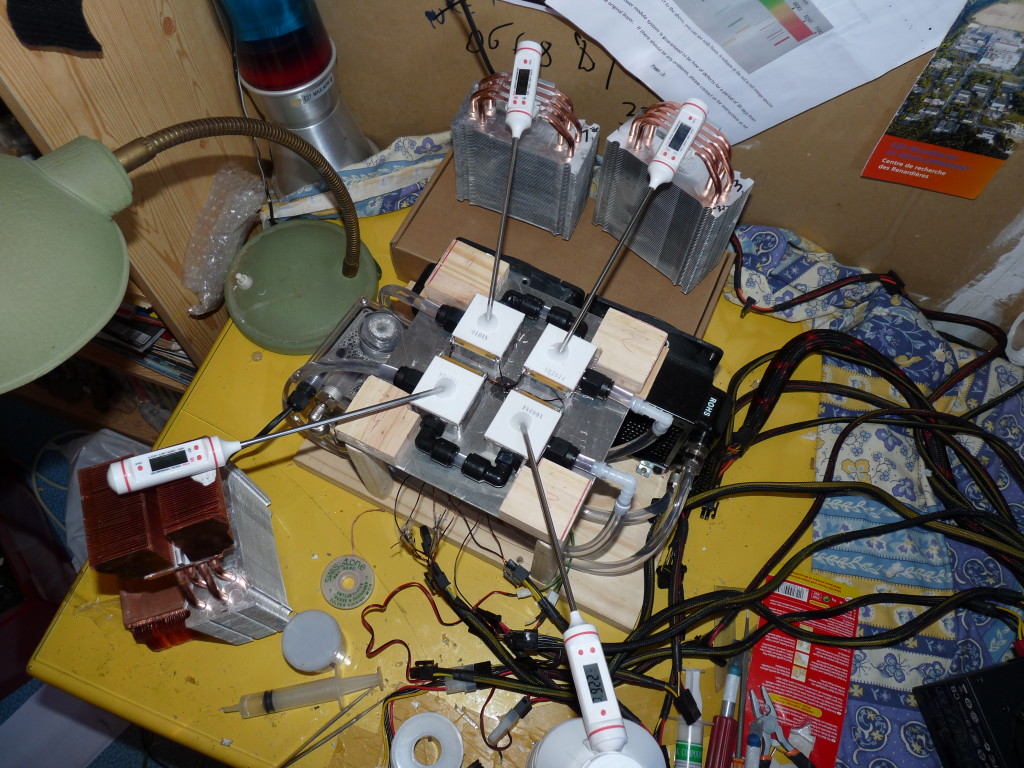
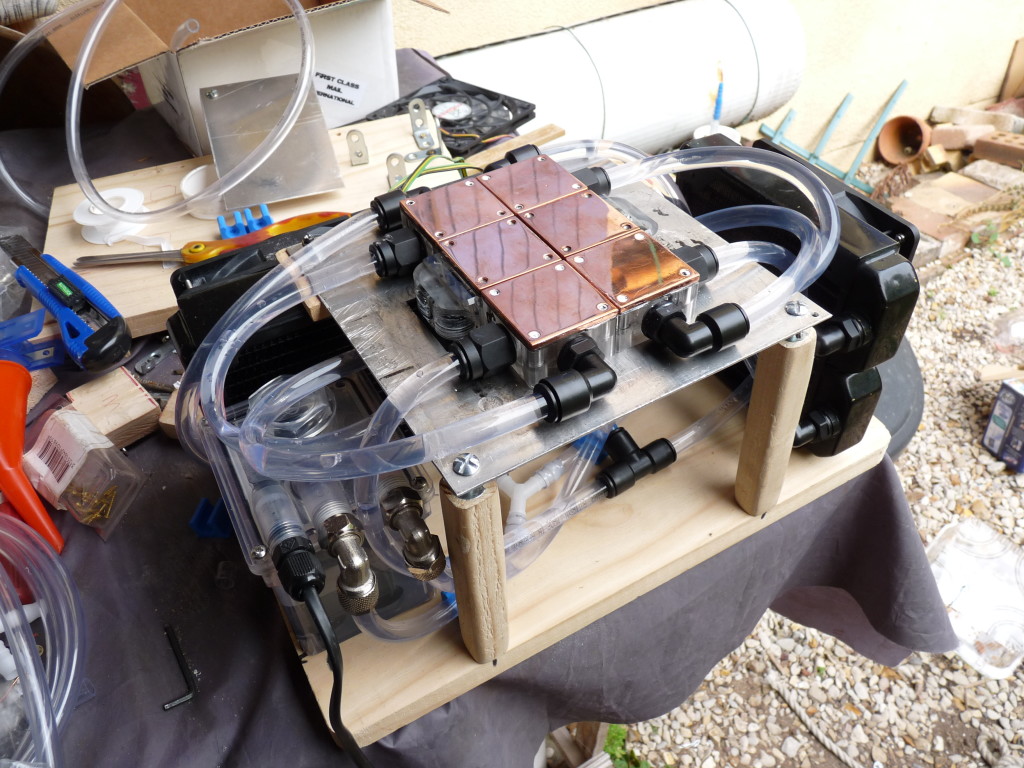
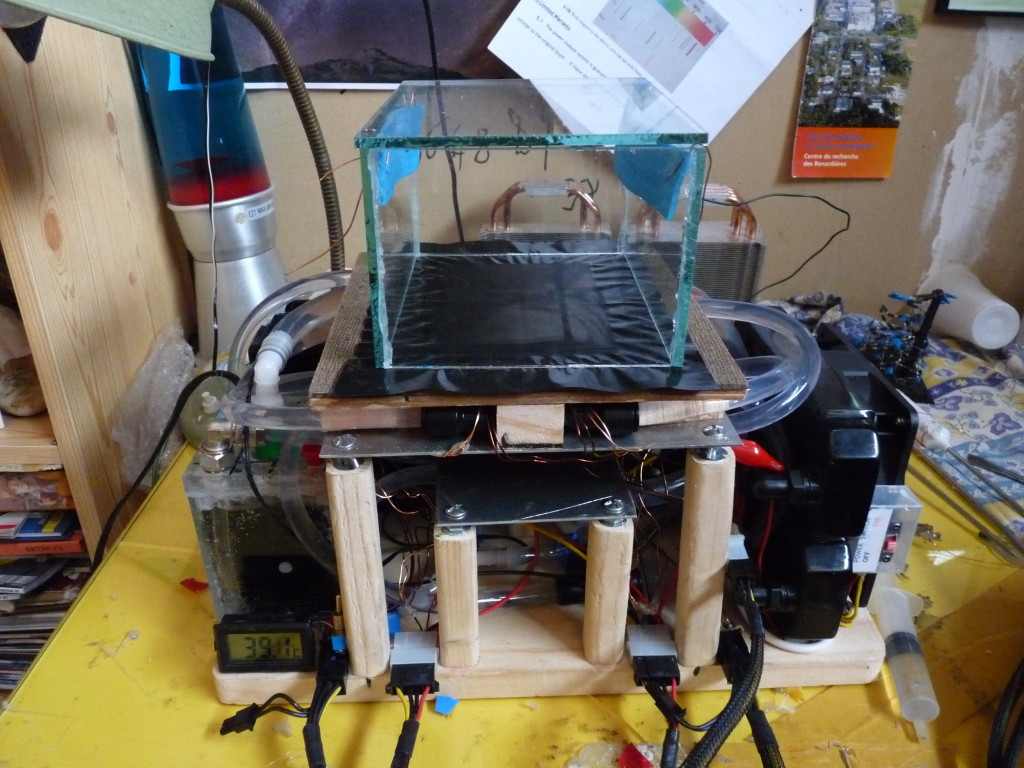
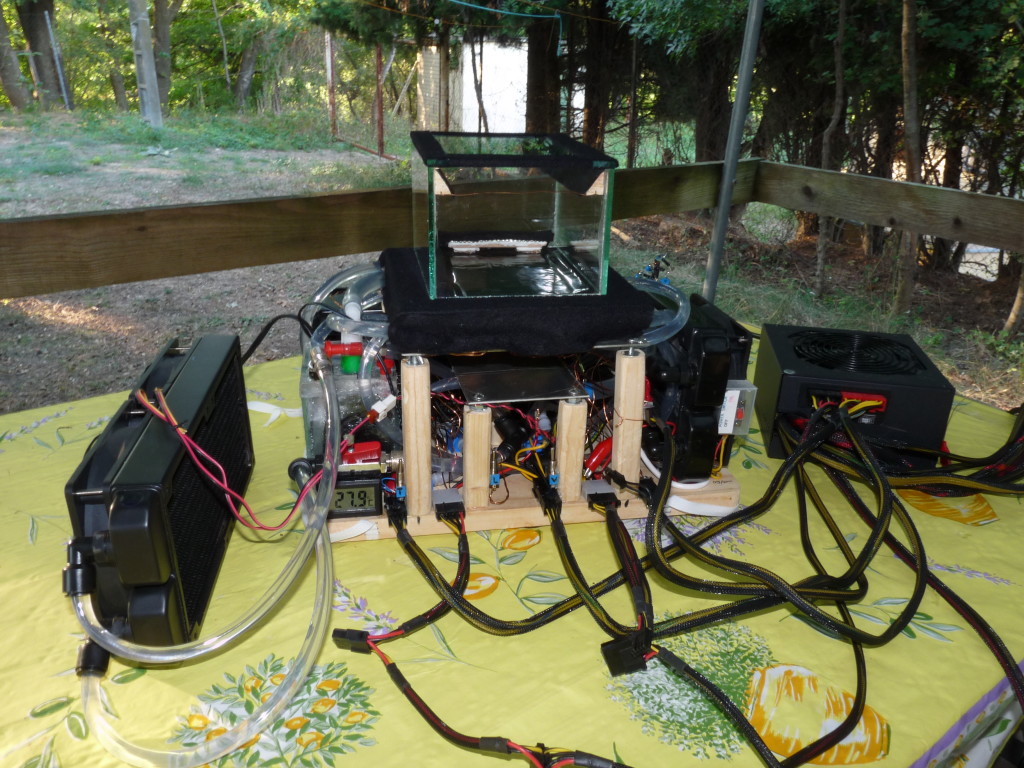
Second build
I wanted a bigger surface. The bigger the surface, the more you see complete tracks from cosmic radiations (electrons, protons and muons). I purchased in total 16 waterblock, to build a 32 peltiers machine. I had the right temperature on the surfaces of peltiers (about -35°C) but it worked for 10 min then the performance dropped. The quantity of heat to remove was too much for the radiators. It would require more radiatiors to operate normally. 32 peltiers needed about 140 A : this amperage would require also 2 or 3 high end PSU. The enormous quantity of heat to remove and the electricity to supply would lead to an enormous machine, so I stopped this project, which was not technically viable. But it was fun.
Third build
My first build worked well, but it needed an external radiator and a power supply. I wanted a machine « autonomous », which works just after being plugged. So I integrated a third radiator and the power supply.
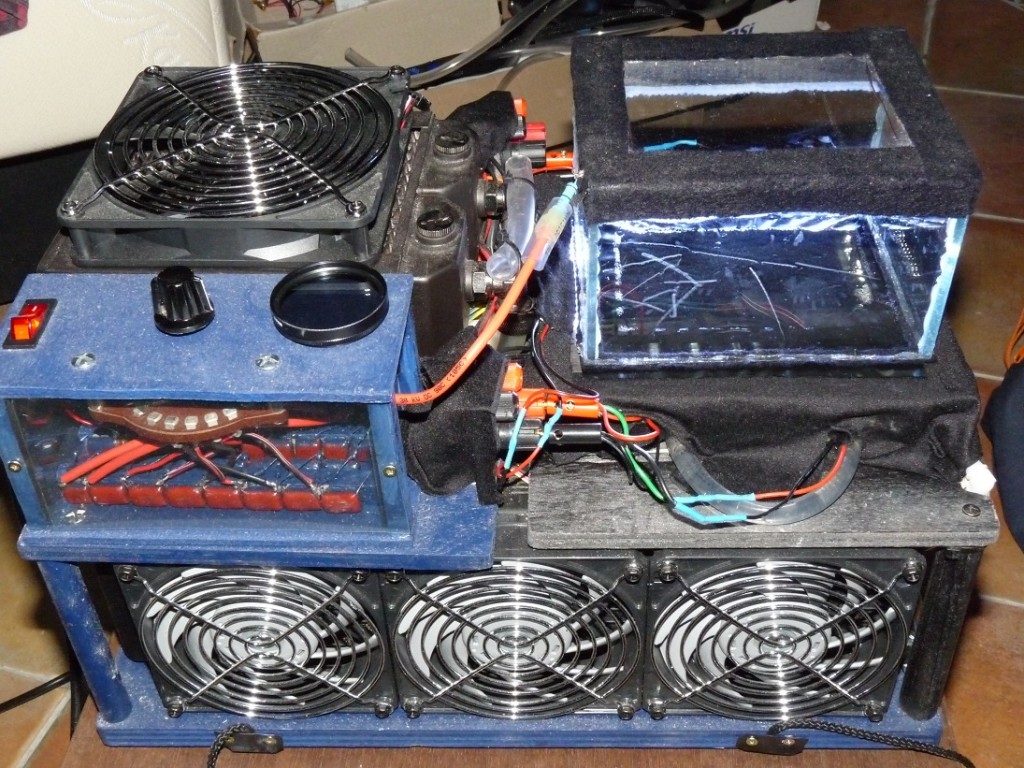
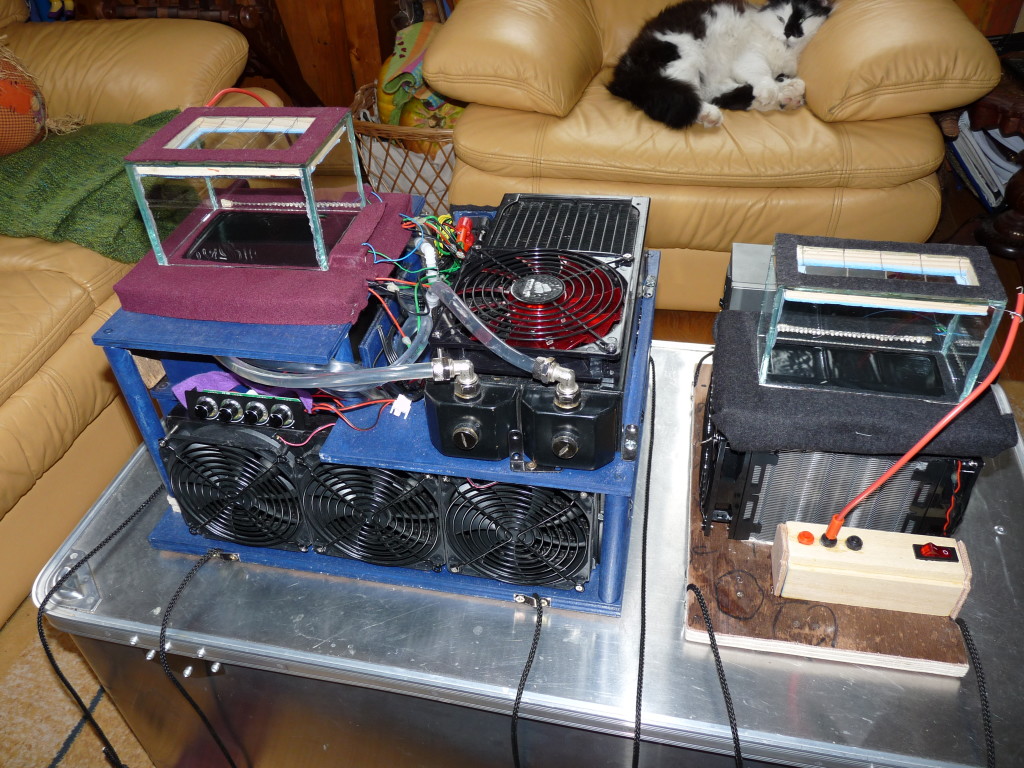
On the picture of left, you can see the V3 air cooled cloud chamber. On the right picture, you can see the Cockroft Walton circuit for the high voltage production.
Fourth build
The problematic about many plexiglass waterblock is that plastic don’t last very long : they cracks and leaks with time. So if you want to build a watercooled cloud chamber, better use a giant waterblock. It’s easier because this waterblock has only 2 pipes (in and out). You may find some useful idea if you type « Aluminum Water Block Thermoelectric » in google. I build several of cloud chamber using big waterblock, but I can’t show you exactly what it look like. The chambers have now 8 peltiers, for an active surface of 16 x 8 cm. We can go further but this will lead to big machine difficult to transport. 8 peltiers seems to be the thermal limit for the waterblock.
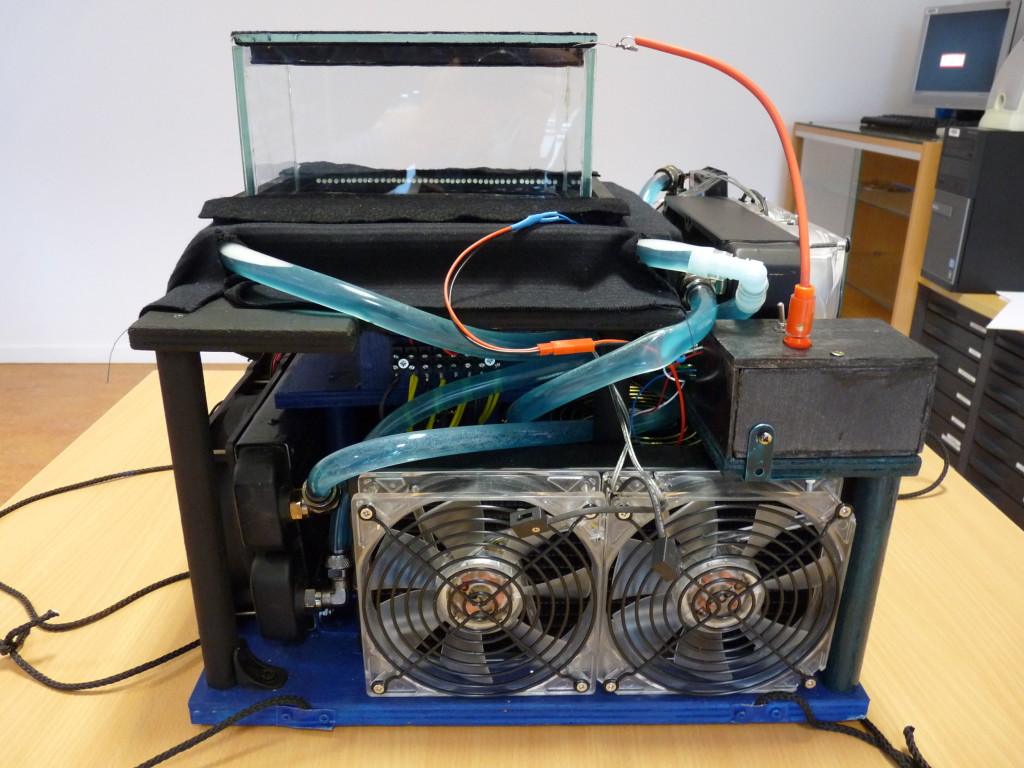
I improved the functionality of machines at each iteration. Not only the design but also the physical parameters that allow to obtain the most stable equilibrium possible : dimensions and insulation of the room, intensity of the field, rate of evaporation of the alcohol, possibility of use a magnet closer to the surface. The machines were enough autonomous so I could transport them to any location, in mountain at a high altitude camping to study cosmic radiation or to make presentations about nuclear physics.
Fifth build
The final version of the thermoelectric cloud chamber. I built 13 of them for a pedagogical project, where school had to assembly and use their cloud chambers. Five years later, these cloud chamber are still running, but some needed the replacement of some peltiers where the performance dropped with time (temperature cycling tends to reduce the lifetime of peltier, specially with high temperature if the maintenance is not done regularly (change of thermal paste under the peltiers).
CW circuits (high voltage) and LCD controllers (showing temperature of water).
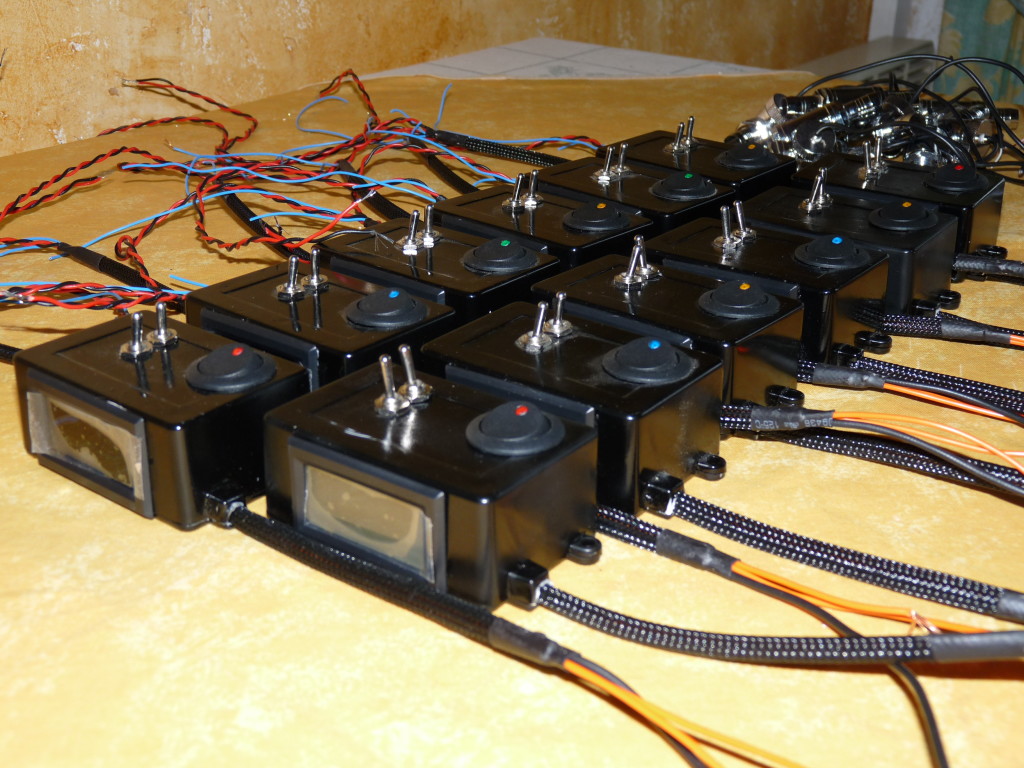
I made also a portable cloud chamber, dedicated to run in a remote area with no electricity, for a VICE reportage about Semipalatinsk region. The machine is feed from a 12V car battery. Unfortunately, the very high heat of the desert made all the water warm which meant the peltiers didn’t cool the surface down significantly enough. The radiators didn’t perform well, due to the warm ambient air.
